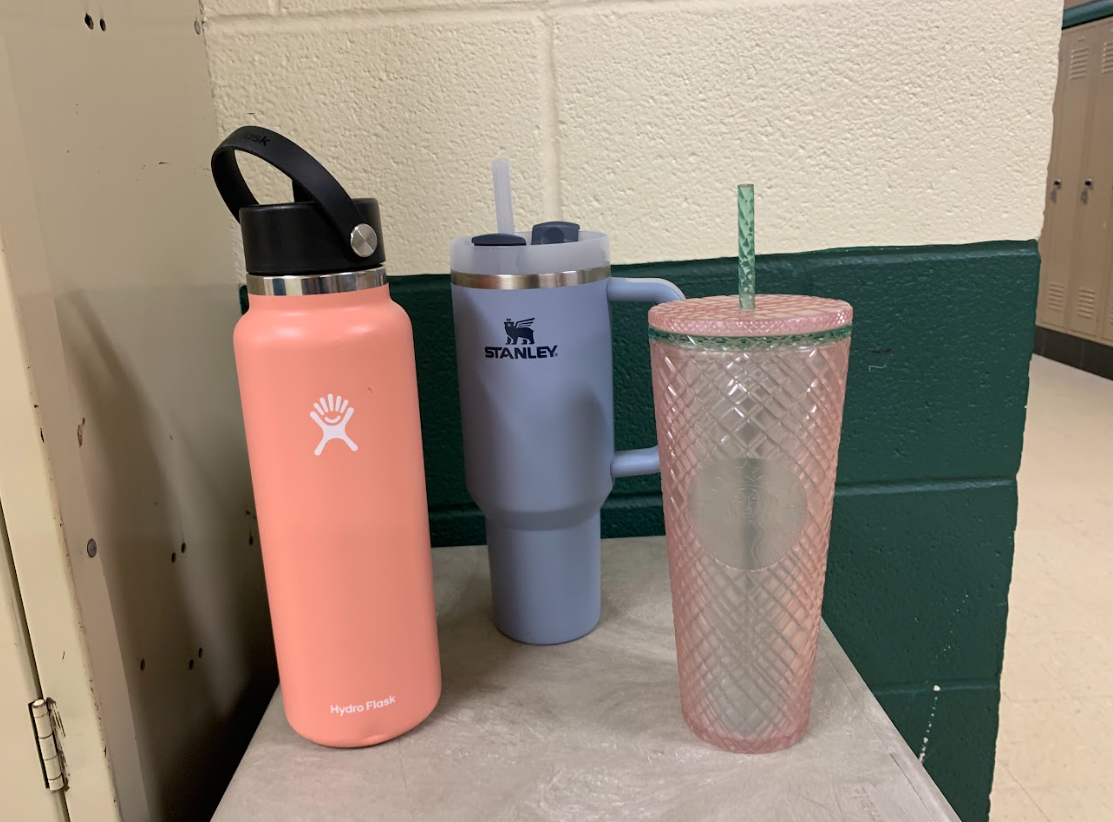Nobody can walk through the halls or enter the lunch room without spotting a giant, 40-ounce, colorful chunk of stainless steel – The Stanley Cup. All over the nation, teens and parents alike are thirsty to get their hands on these specific water bottles due to their burst in popularity through TikTok and Instagram. However, while this trend may seem harmless, Stanley’s devoted fans have caused mass overconsumption and even riots at Target and Starbucks. The Stanley Cup trend must die off soon, because this water bottle has turned into a status symbol for many and harms our environment.
To begin, the Stanley has had a strong negative effect on teens, especially middle-schoolers. The new-found wave of “Preppies”, similar to the wave of “VSCO Girls” in 2020, have adopted the Stanley Cup trend and have helped it to flourish. However, in the age of social media, kids may feel pressured to ask for a Stanley for Christmas or their birthday because they do not want to be ridiculed by their peers. There are countless videos online of young girls opening Christmas presents and being brought to tears by the Stanley Cup. “Why are these girls getting so worked up over a water bottle?”, some may ask. The fact of the matter is that when those girls go back to school after winter break, Stanley in tow, they will immediately be part of the Stanley cup group, a club of sorts. They’re then able to fit in with their peers instead of being seen as social outcasts.
Furthermore, Stanley strongly contributes to the rise of consumerism. The Stanley Cup is a reusable water bottle, meant to last an entire life. All someone would need is one cup, right? Wrong. Many Stanley cup fanatics collect these water bottles like Funko Pops or Pokémon cards, boasting their huge collection of different colored water bottles online. What’s more, there have even been fights over these cups. Recently, Stanley collaborated with Starbucks, a well-known coffee shop chain, to make the hot pink Stanley x Starbucks water bottle. This cup sold out within minutes, some even being stolen in all of the commotion. The once fifty-dollar exclusive cup now resells for over three hundred dollars. Not to mention the vast number of useless “accessories” one can buy for their Stanley Cup, including but not limited to, a Stanley Cup snack holder, a Stanley Cup straw cover, Stanley Cup keychains, and even a Stanley cup bag that you can put your lip gloss and credit card in. The act of buying all of these useless items greatly decreases resources and drives up the price of the item, contributing to the “social status” aspect of the already-expensive cup.
Lastly, the Stanley Cup is not as environmentally friendly as some believe since the water bottle is reusable and, as an added bonus, helps teens remember to stay hydrated. While the latter may be true, the former is incredibly wrong. For one, Stanley Cups are rarely recycled and take hundreds of years to decompose. That means that once this trend finally dies out, there will be thousands of “preppy” water bottles clogging landfills. In a 2009 study by the New York Times and reported on by Wired, they stated that “The production of stainless steel bottles requires seven times the amount of fossil fuel, emits 14 times more greenhouse gasses into the atmosphere, and requires hundreds of times more metal resources.”
All in all, the Stanley Cup trend has had no benefit whatsoever,so we should all refrain from buying one as status symbols to post online.







Rocky • Feb 12, 2024 at 11:36 am
As a college student, I find this to be an interesting topic. I explored some of the info you mentioned and it made me think of Uses and Gratifications theory. For example, teens and/or young adults would buy a Stanley cup after seeing others on TicTok collect the cups and being happy or proud of it. In other words, someone buys a Stanley cup to make themselves feel better within a social medium. Said person is using media to gain something out of what they’ve interacted with. This is basically the same as reading a book to get info out of it’s content and/or listen to music to feel a certain way at any time.